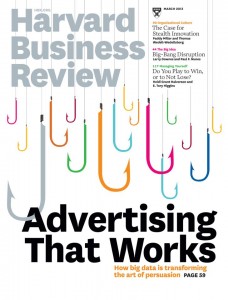
Ceci c'est un meme.
On Forbes today, I look at the phenomenon of memes in the legal and economic context, using my now notorious “Best Buy” post as an example. Along the way, I talk antitrust, copyright, trademark, network effects, Robert Metcalfe and Ronald Coase.
It’s now been a month and a half since I wrote that electronics retailer Best Buy was going out of business…gradually. The post, a preview of an article and future book that I’ve been researching on-and-off for the last year, continues to have a life of its own.
Commentary about the post has appeared in online and offline publications, including The Financial Times, The Wall Street Journal, The New York Times, TechCrunch, Slashdot, MetaFilter, Reddit, The Huffington Post, The Motley Fool, and CNN. Some of these articles generated hundreds of user comments, in addition to those that appeared here at Forbes.
(I was also interviewed by a variety of news sources, including TechCrunch’s Andrew Keen.)
Today, the original post hit another milestone, passing 2.9 million page views.
Watching the article move through the Internet, I’ve gotten a first-hand lesson in how network effects can generate real value.
Network effects are an economic principle that suggests certain goods and services experience increasing returns to scale. That means the more users a particular product or service has, the more valuable the product becomes and the more rapidly its overall value increases. A barrel of oil, like many commodity goods, does not experience network effects – only one person can own it at a time, and once it’s been burned, it’s gone.
In sharp contrast, the value of networked goods increase in value as they are consumed. Indeed, the more they are used, the faster the increase–generating a kind of momentum or gravitational pull. As Robert Metcalfe, founder of 3Com and co-inventor of Ethernet explained it, the value of a network can be plotted as the square of the number of connected users or devices—a curve that approaches infinity until most everything that can be connected already is. George Gilder called that formula “Metcalfe’s Law.”
Since information can be used simultaneously by everyone and never gets used up, nearly all information products can be the beneficiaries of network effects. Standards are the obvious example. TCP/IP, the basic protocol that governs interactions between computers connected to the Internet, started out humbly as an information exchange standard for government and research university users. But in part because it was non-proprietary and therefore free for anyone to use without permission or licensing fees, it spread from public to private sector users, slowly at first but over time at accelerating rates.
Gradually, then suddenly, TCP/IP became, in effect, a least common denominator standard by which otherwise incompatible systems could share information. As momentum grew, TCP/IP and related protocols overtook and replaced better-marketed and more robust standards, including IBM’s SNA and DEC’s DECnet. These proprietary standards, artificially limited to the devices of a particular manufacturer, couldn’t spread as quickly or as smoothly as TCP/IP.
From computing applications, Internet standards spread even faster, taking over switched telephone networks (Voice over IP), television (over-the-top services such as YouTube and Hulu), radio (Pandora, Spotify)—you name it.
Today the TCP/IP family of protocols, still free-of-charge, is the de facto global standard for information exchange, the lynchpin of the Internet revolution. The standards continue to improve, thanks to the largely-voluntary efforts of The Internet Society and its virtual engineering task forces. They’re the best example I know of network effects in action, and they’ve created both a platform and a blueprint for other networked goods that make use of the standards.
Beyond standards, network effects are natural features of other information products including software. Since the marginal cost of a copy is low (essentially free in the post-media days of Web-based distribution and cloud services), establishing market share can happen at relatively low cost. Once a piece of software—Microsoft Windows, AOL instant messenger in the old days, Facebook and Twitter more recently—starts ramping up the curve, it gains considerable momentum, which may be all it takes to beat out a rival or displace an older leader. At saturation, a software product becomes, in essence, the standard.
From a legal standpoint, unfortunately, market saturation begins to resemble an illegal monopoly, especially when viewed through the lens of industrial age ideas about markets and competition. (That, of course, is the lens that even 21st century regulators still use.) But what legal academics, notably Columbia’s Tim Wu, misunderstand about this phenomenon is that such products have a relatively short life-cycle of dominating. These “information empires,” as Wu calls them, are short-lived, but not, as Wu argues, because regulators cut them down.
Even without government intervention, information products are replaced at accelerating speeds by new disruptors relying on new (or greatly improved) technologies, themselves the beneficiaries of network effects. The actual need for legal intervention is rare. Panicked interference with the natural cycle, on the other hand, results in unintended consequences that damage emerging markets rather than correcting them. Distracted by lingering antitrust battles at home and abroad, Microsoft lost momentum in the last decade. No consumer benefited from that “remedy.”
For more, see “What Makes an Idea a Meme?” on Forbes.



